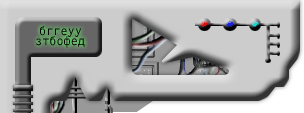SAP Products .
The SAP R/3 application offers end users the ability to run their entire business from a single application
vendor. Some SAP customers choose to run their entire enterprise from SAP, while others run SAP only for specific business
processes, such as manufacturing or finance. SAP is designed to allow customers to choose their own set of business functions,
and it is sold in many configurations--both as specific business functions and as enterprise-wide solutions.
An SAP customer can choose whatever applications meet his site's specific business requirements.
In addition, the customer is free to customize his SAP installation, adding new database entities as well as new functionality.
For example, a company may use an inventory method that is nonstandard but essential to the company's efficiency; the basic
SAP functionality can be modified to accommodate the specific requirements of that inventory method. The result of all of
this flexibility is that virtually every SAP installation has its own specific configuration and set of functions. However,
there are costs associated with customizing SAP. An organization that makes thousands of customizations to its SAP application
may find itself spending millions of dollars to upgrade SAP: when SAP is upgraded, every customization must be identified
in the ABAP code, and these changes must be reapplied to the upgraded SAP software, increasing the cost of the upgrade.
SAP products are distributed as applications with functional modules inside each application. Applications
are generally focused on particular business functions. The modules within each application perform specific business tasks
such as capital investment management, personnel administration, and quality management. The major applications are financials,
human resources, and logistics, described briefly in the following sections.
In addition to basic business functions, SAP also offers products in the following areas
SAP Business Intelligence initiative
SAP Supply Chain Management initiative
SAP Customer
Relationship Management initiative
SAP Electronic Commerce
SAP Human Resources
SAP Treasury
SAP Real Estate
SAP Environment, Health, & Safety
SAP has also branched out from traditional online transaction processing (OLTP) products into data
warehousing with its Business Information Warehouse (BIW) and Supply Chain Optimization, Planning, and Execution (SCOPE) products
Financials applications
The SAP Financials applications contain all of the functionality needed for enterprise-wide financial
management. The modules within the Financials applications include the following:
Financial Accounting (FI)
Provides a complete financial accounting solution, including income
statements, balance sheets, journals, ledgers, and all areas of financial accounting.
Enterprise Controlling (EC)
Assists in controller tasks.
Capital Investment Management (IM)
Assists finance organizations in their capital investments
and tracking.
Controlling (CO)
Assists the controller organization.
Treasury (TR)
Assists with transactions related to the U.S. Treasury.
Human Resources applications
The SAP Human Resources (HR) applications are designed to provide a fully functioning HR system.
They include two primary modules:
Personnel Administration (PA)
Assists with all areas of personnel administration, including applicant
tracking and personnel history.
Personnel Development (PD)
Assists with training and educational status of employees.
These
systems handle all of the mundane HR tasks, such as personnel and payroll, and also a number of more esoteric HR functions,
such as seminar and convention management.
Logistics applications
The SAP Logistics applications include SAP's most popular modules. Logistics was the first area of
entry for SAP. This includes virtually every area of manufacturing, from the initial acquisition of raw materials to the delivery
of finished goods. The modules in this area include the following products:
Materials Management (MM)
Manages raw materials, inventory, and all aspects of goods manufacturing.
Production Planning (PP)
Offers sophisticated tools for planning large production environments.
General Logistics (LO)
Manages logistics for companies that require large-scale deployment of
goods and resources.
Sales and Distribution (SD)
Manages the inventory and distribution of finished goods.
Plant Maintenance (PM)
Manages the resources required for large manufacturing plants.
Quality Management (QM)
Captures and maintains quality control for manufacturing environments.
Project System (PS)
Assists with the scheduling of project tasks and interdependencies between
tasks.

